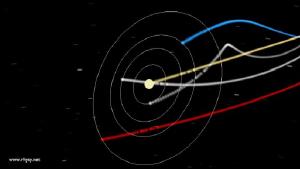Blog
Body in Motion
23 January 2015
Standing upon the Earth, we feel at rest. The Sun rises and sets, the stars drift across the night sky. The very universe spins around us. But that’s only how it appears.
 Rhys Taylor
Rhys TaylorThe Earth rotates about its axis, and us along with it. The Earth moves around the Sun in a nearly circular orbit. And of course the Sun moves through the galaxy. Not quite the way that infamous video portrays, but rather in the plane of the galaxy, with the solar system tilted about 60 degrees relative to the Sun’s motion. The Sun doesn’t follow a circular or elliptical path through the Milky Way, but rather bobs up and down relative to the galactic plane. Then, of course the Milky Way is moving toward the Andromeda galaxy, which will eventually lead to their merging, and the entire local group is moving toward the Shapley supercluster.
So what about a larger scale? Surely all that motion must be relative to something stationary? Not really. In a way, you could consider the cosmic microwave background to be the largest thing we can observe, and we’re even moving relative to that. Relative to the entire cosmos, we’re moving at about 360 km/s.
And yet relative to Earth we hardly move at all. So we stand upon the Earth at watch the universe spin.